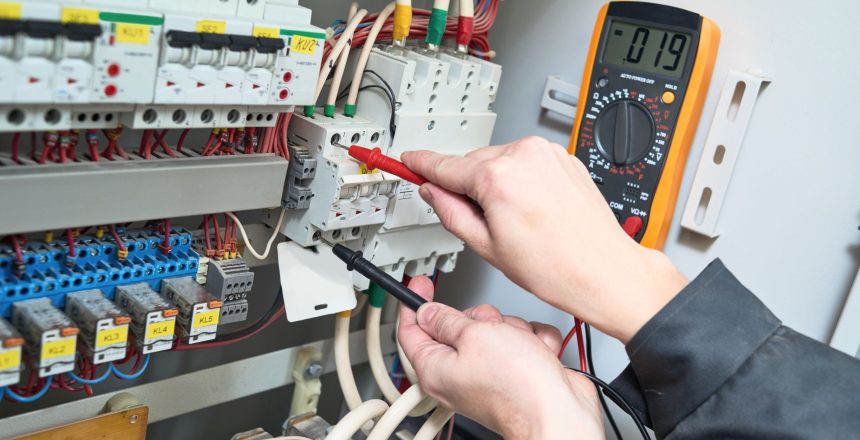Arc Flash Risk in Batteries
Arc Flash risk associated with alternating current systems has been well studied and is becoming better understood. People have become familiar with the increased incident energy levels generally associated with Low Voltage, and less frequently associate Arc Flash as a high voltage problem.
Direct current, particularly in relation to battery systems, however, is less well understood, and for many has been an area that has either been overlooked in the past or completely ignored. IEEE 1584 does recognise the Arc Flash risks associated with D.C. and battery systems, but does not include for modelling incident energy, referring instead to several published papers on the matter. This does not, however, mean that battery systems are inherently safe; if anything, the dangers posed by battery systems are more significant than their A.C. generated counterpart, in that generators can be brought to a halt and thus stop generating an electromotive force, whereas battery systems will continually provide a supply, even when they have little or no charge.
There is also a general misconception that those working on A.C. systems must be highly skilled; in other words they have a high level of competence, whilst those working with battery systems are often considered to require a lower level of competence, as the risks associated with battery systems are incorrectly considered to be lower. More persons work with D.C. systems, such as vehicle mechanics as well as those who repair and maintain electrically powered forklift trucks, powered elevated work platforms and even those working on emergency lighting central battery units and large uninterruptable power supply systems.
The capacities of automotive battery systems and the technology that provides the power continually grows. Terminal voltages, ampere-hour capacities and load demands continue to increase, although batteries have been used for motive power for many decades, the way that we use them in cars is still an emerging technology. For many it is difficult to lose the sense of safety that comes from 12-volt and 24-volt battery systems, even though standard car and lorry batteries also pose significant danger. Those who are now expected to work on systems operating at, and often above 500 volts D.C fail to appreciate the additional danger that they are exposed to.
In a recent study carried out for a car manufacturer, the following incident energy values were determined for a particular automotive battery system:

Significant values of arc flash incident energy can exist, considering that there is unlikely to be protection afforded to disconnect supply if a fault develops. So how could persons be put at risk?
Battery damage, that is both visible damage and damage that occurs within batteries, is a significant issue, particularly when dealing with systems that have been subjected to impact, such as an electric vehicle involved in a road traffic collision. Often persons are working on such battery systems without any understanding of the potential damage that might have occurred or the extent of the danger to which they are exposed.
Similarly, battery systems that have been subjected to unauthorised repairs and modifications, such as the average DIYer attempting an installation and then seeking help when it goes wrong, could expose those who pick up the pieces to significant risk.
Those who are used to dealing with battery issues will have developed a passion for relying on their trusty multimeter. Such multimeters, whilst perfectly adequate for working on 12-volt systems may not be rated for the voltages and currents that newer automotive battery systems operate at, and in many cases the Category rating of such meters will be woefully inadequate. Often, the condition of test instruments and their test leads are damaged and using them is dangerous. What many technicians and mechanics forget, is that in most cases a diagnostic system is in place that allows batteries to be interrogated, using real-time and historic data, all from the safety of a laptop computer.
Similarly, the tools used for working, and the safe systems of work that need to be used whilst working on high energy battery systems is often overlooked, with a reliance on tried and tested screwdrivers and spanners that are inadequate with regards to live working- remember, whilst working on battery connections, the power supply will always be present.
This takes us towards competence, that being persons having the required knowledge and experience to work safely. The standard of training and assessment, along with information and supervision varies greatly between companies and industries and will continue to do so until the battery sector finds its feet and a common way of working evolves. Many companies are waiting for clear and decisive guidance to be issued and are happy to run with the risks until this happens, oblivious to the fact that the Electricity at Work Regulations 1989 applies equally to battery systems as it does to those systems connected to a mains supply.
Being aware of the danger that direct current, and battery systems specifically, can present is the start of the risk reduction process. Identifying incident energy values, developing safe systems of work, and making persons aware of the risks that they are exposed to, along with the control measures put in place to keep people safe, is a vital part of the Arc Flash risk reduction program.
How Can ESUK Help?
Do you need assistance assessing / managing your Arc Flash risk? Why not get in touch with us using the form below? We would be happy to discuss your Arc Flash requirements.
Contact us to find out more
More news & views
Electrical Safety news


Standards for Electrical Test Instruments and Test Leads
Test instruments and test leads are a temporary connection to electrical systems, often live at the time, for the purpose of making measurements.
Electrical Safety news


BS 7671 2022 Updates – Changes To The Wiring Regulations
The second amendment to the 18th Edition IET Wiring Regulations are out, and all of the IET Guidance Notes have been updated accordingly. Electricians and engineers have had time to digest every minute detail and discuss the implications at length.
Electrical Safety news


Electrical Safety Management System – Electrical Safety Policy
One question we are often asked is, what should an ESMS contain? has prompted me to write a series of articles looking at the different aspects of this vital policy document ESMS. Here is the first article in that series
